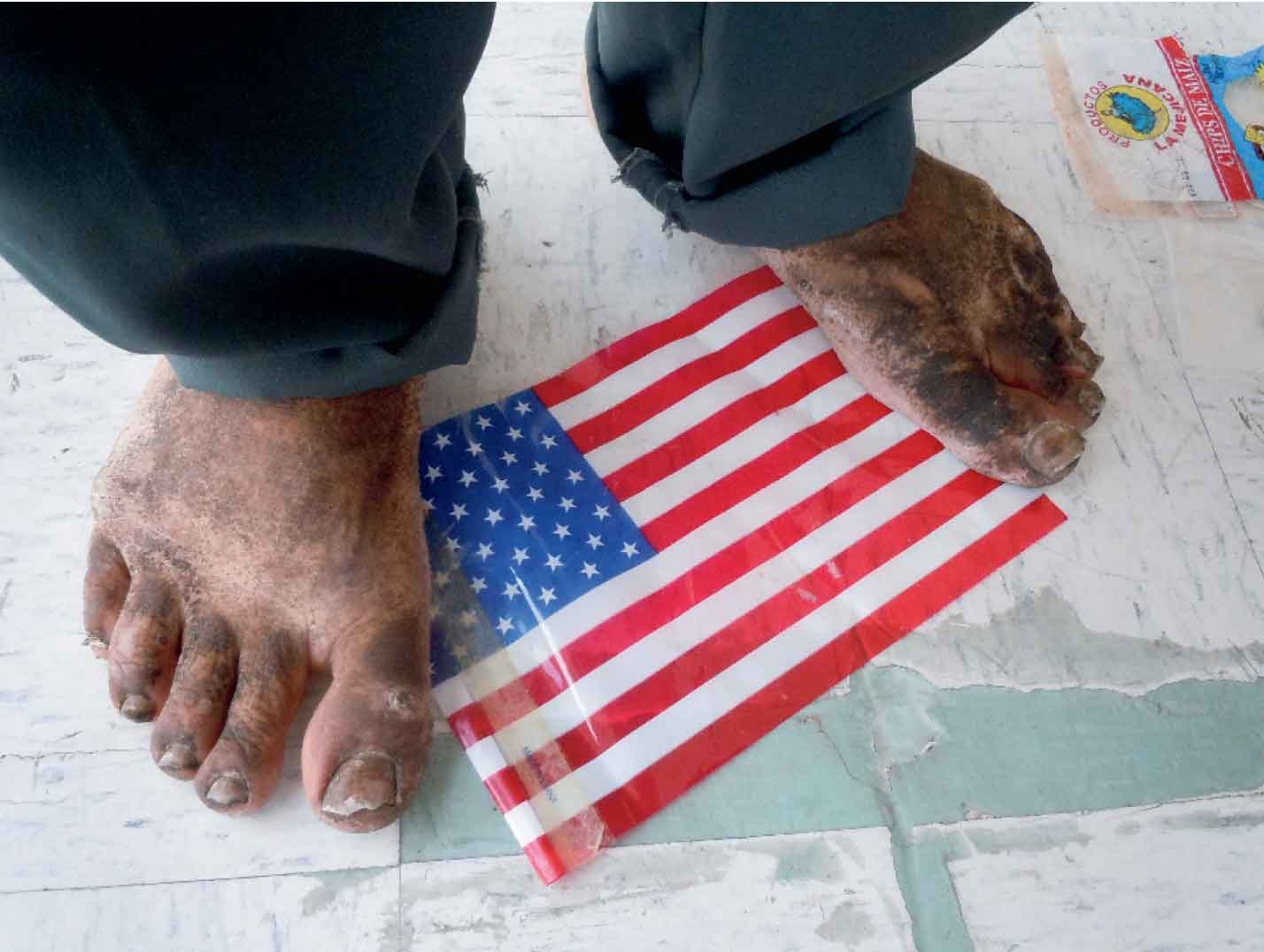Paulo Nazareth’s heritage plays a central role in the reception of his work: Brazilian, of African and indigenous descent, with a lean body, a wiry beard and moustache, and a think bush of Afro-hair either tied up in a bundle above his head or worn with a half-turban. There is something simultaneously shamanic and Christ-like in his appearance, a feature that the artist deploys to his advantage. Nazareth’s hippyish appearance suggests that there may be a spiritual dimension to his ad hoc performance works made in the public realm, in which the artist has tied a piece of raw meat to his face (as in Meat, 2005), seemed to devour a shorn tuft of his own hair (Cruzeiro do Sul – I Think It Might Be the Color of My Skin, 2010) or walked across his home city of Belo Horizonte with his mouth kept constantly wide open, exposing his missing front tooth (Elephant Tooth, 2007). There is both a sense of purging ritualism and martyrdom present in the discomfort that these actions must cause to their performer.
These qualities are present in the artist’s most ambitious work to date, News from the Americas (2011–2). In March 2011 Nazareth left the state of Minas Gerais and travelled several thousand miles north, by bus and foot, passing through 15 countries before finally arriving in New York five months later. Throughout this epic trip Nazareth was barefoot and refrained from washing his feet, until finally ritualistically bathing them in the Hudson River. The trip – half durational performance, half grand land art – acted as a record of the different reactions the artist elicited, especially in regards to his racial identity, as he passed through the different countries. The artist exchanged a constant stream of messages with curator Janaina Melo during his journey. ‘I have transformed myself,’ Nazareth noted, ‘by being the same.’ There is an analogy to be made with another comment the artist makes during this performative trip, this time in relation to bananas in Latin America. He had originally intended to carry a sack of the fruit with him (the artist planned to sell the bananas from the back of a campervan at Art Basel Miami in December 2011, for a work titled Banana Market / Art Market) but was not allowed to carry it across international borders. Yet as Nazareth points out, ‘Bananas are present across Latin America.’ A banana is a banana, but becomes something more or less as a result of geopolitical circumstances.
This article originally appeared in the September 2012 issue
